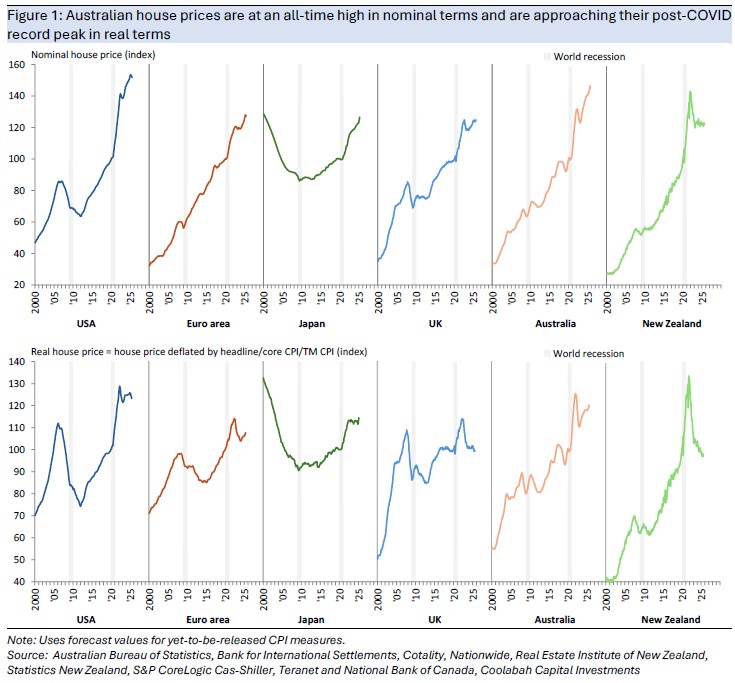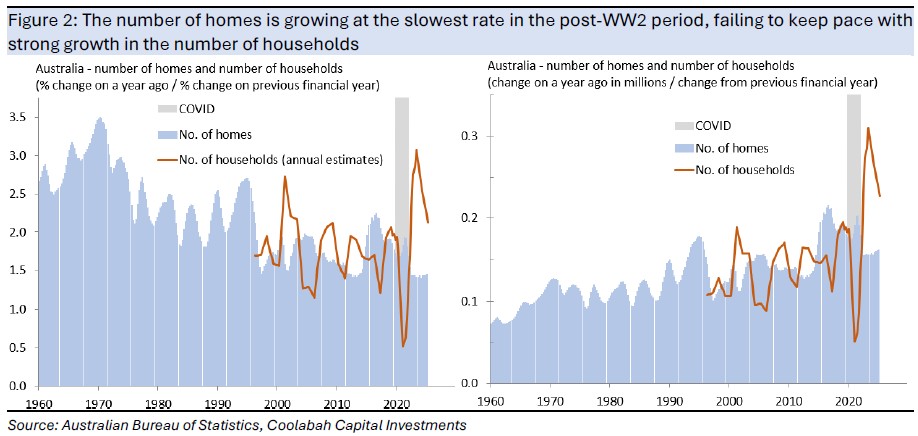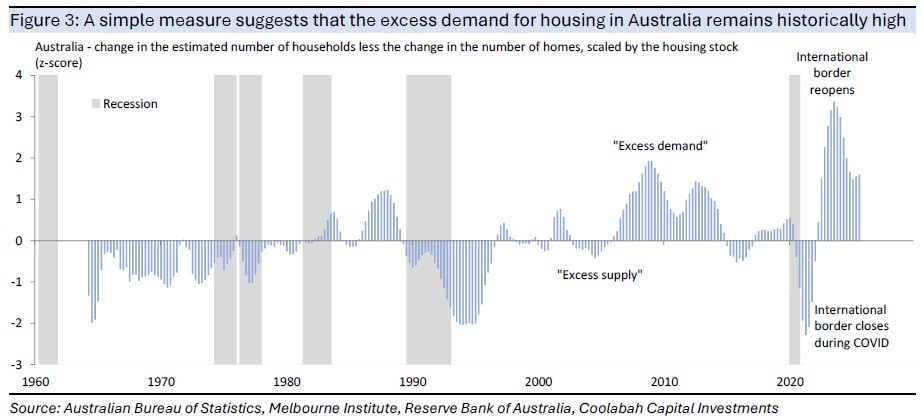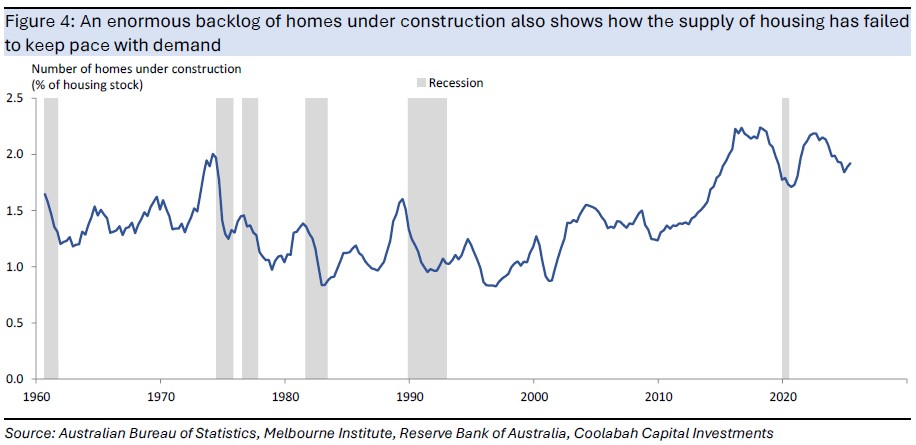House prices, interest rates & the supply of housing
House prices are part of how interest rates affect the economy, where lower interest rates can lift prices, thereby encouraging construction, with both construction and housing wealth boosting consumer spending at the margin.
Australian house prices have responded strongly to lower interest rates, with national prices reaching a fresh all-time high in nominal terms and fast closing in on the COVID-era record peak in inflation-adjusted terms.
The sensitivity of house prices to interest rates is enhanced by the inflexibility of the supply side of Australia’s housing market, where increased demand is reflected more in higher house prices than in additional construction.
The inflexibility of the housing market is apparent in the striking mismatch between the number of households – which grew by over 2% last financial year – and the number of homes – which are growing at an annual rate of about 1½%, the slowest growth in the post-WW2 period.
Expressed another way, the number of households increased by almost 0.25mn last financial year, while the number of homes is increasing at an annual rate of just over 0.15mn, on par with the 1990s, when Australia’s population was about a third smaller than it is now.
Calculating a measure of excess demand for homes in the housing market, CCI modified an indicator from RBA research on the housing market.
This involved approximating excess demand using the detrended difference between the change in the number of households and the change in the number of homes, scaled by the stock of housing.
Since data on the number of households have a relatively short history and are only available annually, we adopted the RBA approach of estimating the number of households using quarterly data on the number of adults in Australia.
Ignoring the distortions created by COVID, when growth in the number of households slumped as Australia’s international border was closed and surged when the border was reopened, this measure suggests that there is still a historically high level of excess demand, similar to the extremes of the 2000s and 2010s.
As a crosscheck, the number of homes under construction tells the same story, with the backlog of unfinished homes, currently around 2% of the housing stock, a shade under the record high of 2¼% regularly reached over the past decade.
Although the NSW state government is currently trying to build more homes, these indicators reinforce how house prices are likely to retain an outsized sensitivity to lower interest rates given the supply of housing has failed to keep pace with demand.




5 topics

